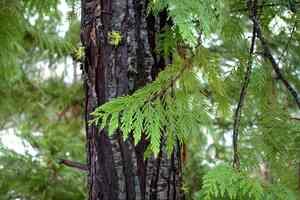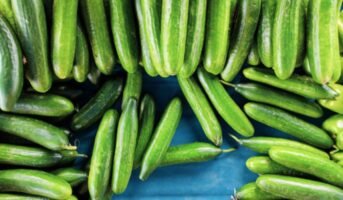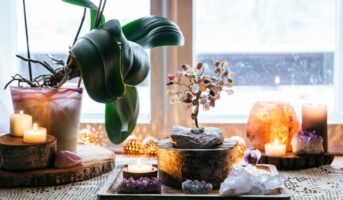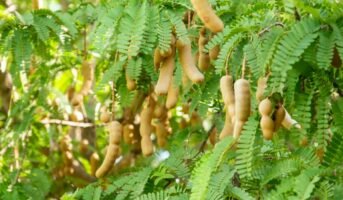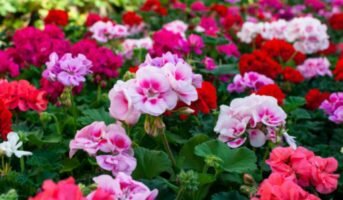Cedar trees are a well-known and popular variety of trees belonging to the genus Cedrus. As humans have evolved, travelled, and created cities, cedars have significantly helped communities. These fir trees are still surrounded by health, vigour, and opportunities. Cedarwood and cedar trees are used for various products, including panelling, furniture, boats, greenhouses, and cigar boxes, to mention a few.
See also: Agarwood tree: A guide to growing and maintaining the Wood of the Gods
Cedar tree: Quick facts
| Kingdom | Plantae |
| Division | Pinophyta |
| Family | Pinaceae |
| Genus | Cedrus |
| Varieties available | Four true species |
| Height | More than 30 metres |
| Climate | Warm summers and cold winters |
| Sun Exposure | Full sun |
| Ideal temperature | Any temperature depending on the species |
| Soil type | Well-drained, moist soil |
| Soil pH | 6.0 to 6.5 |
Cedar tree: Physical description
Cedar trees are big, towering trees with massive, asymmetrical heads of spreading branches. Young trees have smooth, dark-grey bark that become scaly, fissured, and brown with age. The rigid, needle-like three-sided leaves are dispersed along the long shoots and in dense tufts at the tips of the short spurs. Each leaf has two resin canals and lasts three to six years on the tree.
The huge, barrel-shaped, resinous female cones, which can be green or purple, are carried on short stalks and are coated in broad, thin, tightly overlapping scales of wood, each of which has a claw-like protrusion.
Cedar tree: How to grow it?
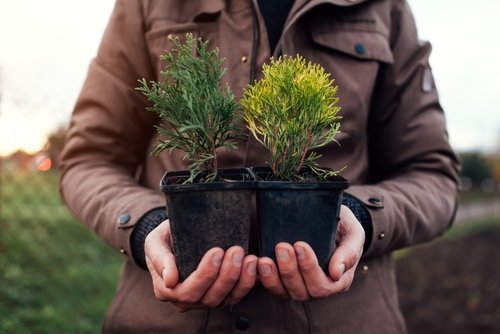
Propagation
- At the onset of spring, cedar seeds are sown.
- For around three weeks, plant the seeds in cool, moist sand. Cold stratification is where layers of moist sand and seeds alternate.
- Plant the seeds in nursery pots with a seedling soil mix (or 2/3 soil mix and 1/3 sand) in a protected area.
- The tiny seeds may mould if the substrate is too wet, so keep it moist but not soggy.
- When your plantules have formed a few leaves, transplant them into a little bigger container.
- Wait until spring of the following year to transplant into the ground.
Irrigation
Once established, cedar trees require relatively little maintenance. Water it frequently throughout the first year after planting to guarantee it can spread its roots and flourish in the best environment possible.
Pruning
Pruning is unnecessary, but if any branches deteriorate or die, removing them before they suddenly fall off is crucial. However, if two tips start to compete, you can trim the weaker one. Your cedar tree may have a height-specific weakening after many years, which may be dangerous if branches start to fall. The best course of action in this circumstance is to contact a pruning expert who can assess how serious the issue is.
How to care for a Cedar Tree?
Keep a two-inch layer of mulch around the tree to prevent moisture loss and protect the tree. You can use a wire cage to prevent injury from mechanical devices. If the location has colder climate, you can secure the young trees by covering with landscape fabric.
Cedar tree: How to maintain it?
- The majority of cedar tree species grow quickly and are typically simple to grow. Choose a sunny area with plenty of space when planting a cedar tree because they grow big. Planting many trees requires spacing of at least five feet.
- A hole that is around three times the size of the root ball should be dug, and the soil there should be amended with compost. Unless the soil is really poor, cedar trees typically do not require fertiliser. Compost can enhance soil quality; if that does not work, try a 10-10-10 fertiliser.
- To keep them upright, young cedar trees may require staking. Add a two-inch layer of mulch all around the tree, being careful to keep it away from the trunk. Mulch aids in preventing water retention.
- Water cedar trees frequently in the summer, but wait until they are completely dry between applications.
- Once they reach maturity, cedar trees only need to be mulched and their dead branches removed.
Cedar tree: Uses
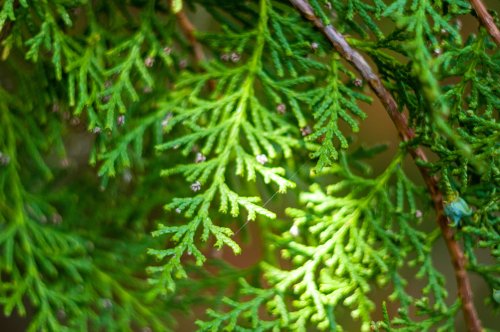
- Recreational opportunities and natural beauty: Cedar trees are a wonder of nature and frequently offer a lovely area for relaxation.
- Biodiversity: A wide variety of plants, animals, and insects call the various types of cedars home. They support a remarkable diversity of organisms surrounding them thanks to their role as habitat.
- Water and soil: Cedar trees take up a lot of space as they grow, and after they are fully grown, this helps to avoid soil erosion. Rainfall can accumulate in cedar forests’ leaves and branches before being absorbed by the earth and returning to the atmosphere.
- Clean air: Cedars’ existence improves air quality and lowers greenhouse gas emissions.
- Moth repellent: Cedarwood soil naturally wards off moths. For this reason, it is used to make contemporary furniture, like wardrobes that hold woollen clothing.
- Wood shingles: North American cedars are exceptionally stable, strong, and light in weight. Wood shingles, which are tapered pieces of wood that coat roofs and buildings to shield them from inclement weather, are made from it.
- Interior panelling: The fact that it does not warp makes it perfect for interior panelling in various areas throughout the house.
Cedar tree: Toxicity
- Cedar trees are toxic to livestock. Toxins such as thujone and Melia toxins A and B, which can result in tremors, muscle contractions, and even death, are found in the berries, bark, and leaves of cedar trees. Small amounts of tree ingestion may result in diarrhoea, colic, and vomiting.
- Dogs can often handle cedar without harm unless they eat the poisonous berries. Additionally, the scents of cedar wood may cause allergies in some dogs. You should refrain from putting cedar shavings and chips in the dog house in this situation.
- Certain cedar species, such as western red cedar, are toxic by nature to both people and pets and should never be used in topical pet products.
Cedar tree: Problems
The plant must be protected from rodents or other animals such as dogs that can munch on the bark of the tree. Moreover, there may be some pesky insects that get attracted to the tree. These may include mites, root weevil, juniper scale and cypress tip moth. Infested trees can show signs such as brown or yellow leaves, reduction of plant sap, white cocoons or black mould.
FAQs
Why are cedars special?
According to legend, it was the first tree ever. In the Bible, the cedar tree is described as being strong and durable, graceful and elegant, majestic and wide-spreading, and high and tall.
What makes cedar the tree of life?
Red cedar is used to make a lot of stuff, from coffins for the dead to fabrics, clothing, shelters, and cribs for the babies. Because native societies relied largely on the western red cedar, it was referred to as the tree of life.
What is cedar called in India?
Cedar tree, which is found in the western Himalayas, is known by different names in India, such as Himalayan Cedar, Deodar, Deodaru and Devadaru.
| Got any questions or point of view on our article? We would love to hear from you. Write to our Editor-in-Chief Jhumur Ghosh at [email protected] |
Housing News Desk is the news desk of leading online real estate portal, Housing.com. Housing News Desk focuses on a variety of topics such as real estate laws, taxes, current news, property trends, home loans, rentals, décor, green homes, home improvement, etc. The main objective of the news desk, is to cover the real estate sector from the perspective of providing information that is useful to the end-user.
Facebook: https://www.facebook.com/housing.com/
Twitter: https://twitter.com/Housing
Email: [email protected]
